
CASE REPO R T Open Access
Successful low-dose azathioprine for myasthenia
gravis despite hepatopathy from primary
sclerosing cholangitis: a case report
Josef Finsterer
*
, Sonja Höflich
Abstract
Introduction: Although myasthenia gravis is frequently associated with other disorders, it has not been reported
together with primary sclerosing cholangitis, complicating the administration of liver-toxic immunosuppressive
therapy.
Case presentation: A 73-year-old Caucasian woman with a history of arterial hypertension, thyroid dysfunction,
glaucoma, right-sided ptosis and later generalized weakness, was diagnosed with myasthenia gravis. Additionally,
primary sclerosing cholangitis was detected, initially prohibiting the administration of immunosuppressants. Despite
treatment with steroids and pyridostigmine she repeatedly experienced myasthenic crises. After the fifth crisis and
after antibody titers had reached levels > 100 nmol/L during two years of follow-up, it was decided to restart
azathioprine. Interestingly, low-dose azathioprine (1.5 mg/kg/day) was well tolerated, had a positive clinical and
immunological effect and did not worsen primary sclerosing cholangitis.
Conclusion: Myasthenia gravis may occur together with primary sclerosing cholangitis in the same patient. Mild
immunosuppression with azathioprine is feasible and effective in such a patient, without worsening myasthenia
gravis or primary sclerosing cholangitis.
Introduction
Myasthenia gravis (MG) may be due to a genetic defect,
intoxication, or most frequently, autoimmune mechan-
isms [1]. Although autoimmune MG is frequently asso-
ciated with other autoimmune disorders [2-13], to the
best of our knowledge the association of MG with pri-
mary sclerosing cholangitis (PSC) has not been reported.
Case presentation
Our patient is a 73-year-old Caucasian woman with a
history of elevated liver function parameters since age
71 and isolated right-sided ptosis one month later.
Within two weeks she also developed easy fatigability,
weakness when climbing stairs, ophthalmoparesis, and
dysphagia for solid food, prompting hospitalization.
Diagnostic work-up revealed elevated antibodies against
postsynaptic acetylcholine-receptors (AchR-ab) with a
titer of 35.7 nmol/L (normal < 0.4 nmol/L) (figure 1),
repetitive nerve stimulation indicative of a postsynaptic
transmission defect, and a positive tensilon test, so pyri-
dostigmine and prednisolone (25 mg/day) were started
(figure 2). Further diagnostic work-up revealed a med-
iastinal tumor and elevated liver function parameters
(figure 3).
On hospital day 11 she experienced a myasthenic crisis,
requiring intubation, intravenous administration of neos-
tigmine and immunoglobulins, and plasmapheresis six
times. Resection of the mediastinal tumor on hospital day
13 revealed a thymoma B3, without indication for che-
motherapy. After surgery pyridostigmine was restarted but
had to be replaced by neostigmine on hospital day 34 due
to better efficacy. Azathioprine was initiated on hospital
day 34 in a reduced dosage (50 mg/day) because of hepa-
topathy and increased to 100 mg/day on hospital day 44
(figure 2). On hospital day 47 she experienced a second
myasthenic crisis and again required intensive care. On
hospital day 57 a third myasthenic crisis manifested with
dysphagia, dyspnea, and respiratory failure, again requiring
intensive care. On hospital day 72, azathioprine was
* Correspondence: fipaps@yahoo.de
Krankenanstalt Rudolfstiftung, Juchg. 25, 1030, Vienna, Austria
Finsterer and Höflich Journal of Medical Case Reports 2010, 4:356
http://www.jmedicalcasereports.com/content/4/1/356 JOURNAL OF MEDICAL
CASE REPORTS
© 2010 Finsterer and Höflich; licensee BioMed Central Ltd. This is an Open Access article distributed under the terms of the Creative
Commons Attribution License (http://creativecommons.org/licenses/by/2.0), which permits unrestricted use, distribution, and
reproduction in any medium, provided the original work is properly cited.

increased to 150 mg/day while prednisolone remained at
25 mg/day (figure 2). Upon diagnostic work-up for further
increase of liver function parameters, magnetic resonance
(MR)-cholangiography revealed PSC with negative anti-
nuclear antibodies (ANA), smooth-muscle antibodies,
anti-mitochondrial antibodies, liver-kidney antibodies, or
soluble liver antigen. Ursodesoxycholic acid was given and
azathioprine was discontinued (figure 2). At discharge on
hospital day 108 she was under prednisolone (15 mg/day),
pyridostigmine (360 mg/day), glimepiride (7 mg/day) for
mild diabetes, ursodesoxycholic acid (1250 mg/day), cal-
cium, and alendrone (70 mg once a week) for osteoporosis
(figure 2). Except for right-sided ptosis, she was symptom-
free.
Two months after dismissal AchR-ab reached its lowest
level (figure 1) so steroids were reduced to 10 mg/day. At
age 72 years, prednisolone was further reduced to 5 mg/
day. Six months later she presented with right-sided pto-
sis, slight weakness, wasting of the thighs, exaggerated
patella tendon reflexes and reduced Achilles tendon
reflexes. Pyridostigmine was increased to 480 mg/day
and prednisolone reduced to 2.5 mg/day. Three months
later pyridostigmine was reduced to 360 mg/day without
a relapse. At age 73 years she experienced a fourth
myasthenic crisis during an infectious disease, requiring
intubation and mechanical ventilation. After increase of
prednisolone and pyridostigmine she made a full recov-
ery. A fifth myasthenic crisis occurred five months later,
which responded simply to switching from pyridostig-
mine to neostigmine intravenously. At that time it was
decided to restart azathioprine in a dosage of 100 mg/day
because of recurrent myasthenic crises and maximal ele-
vation of AchR-ab to 117.03 nmol/L (figures 1 and 2).
Because of azathioprine-induced elevation of liver func-
tion parameters (figure 3) azathioprine had to be reduced
to 50 mg/day. At age 74 years corticosteroids were dis-
continued and azathioprine increased to 75 mg/day and
later 87.5 mg/day, without further elevation of liver func-
tion parameters. Under this regimen MG did not recur
and AchR-ab levels remained low until the last follow-up
at age 75 years.
Discussion
Our patient is not only interesting for the association of
MG with PSC, but also for resection of a thymoma two
days after onset of the first myasthenic crisis, for the
transient administration of drugs, such as calcium,
known to increase the risk for myasthenic crises, for the
continuous rise of the AchR-ab under steroids, and for
the effectiveness and tolerance of azathioprine despite its
liver toxicity. Autoimmune MG is frequently associated
with other autoimmune disease, including primary biliary
cirrhosis (table 1), but has not been reported together
with PSC as in the presented case. PSC is frequently asso-
ciated with autoimmune disorders [14], such as pancrea-
titis, colitis ulcerosa, or Crohn’s disease, of which none
was found in our patient, and responds favorably to
azathioprine [15]. Concerning the optimal timing of thy-
mectomy there is general consensus that it should be
Figure 1 Course of AchR-ab over almost three years, showing
a positive effect of immunosuppression at onset and after the
fifth myasthenic crises despite PSC.
Figure 2 Courses of pyridostigmine, prednisolone, and
azathioprine dosages over a follow-up period of almost three
years, showing that corticosteroids were given throughout this
period in low dosages and that pyridostigmine dosages varied
widely because of the clinical instability.
Figure 3 Course of GOT (glutamic oxaloacetic transaminase),
GPT (glutamate pyruvate transaminase) and GGT (gamma-
glutamyl transpeptidase) over almost three years in a patient
with MG and PSC. GGT reached excessively high levels, particularly
at onset of the disease, where three myasthenic crises occurred.
Finsterer and Höflich Journal of Medical Case Reports 2010, 4:356
http://www.jmedicalcasereports.com/content/4/1/356
Page 2 of 4

carried out as soon as possible. Whether thymectomy
during a myasthenic crisis may jeopardize the patient, or
may prolong hospitalization and should only be carried
out after pre-operative stabilization is under debate.
However, there are indications that thymectomy can be
safely performed even in patients with uncontrolled MG
if there is proper pre-operative preparation, good anes-
thetic management, and optimal peri-operative respira-
tory care [16].
Despite the known intolerance and contraindications for
azathioprine in PSC, it was decided to restart azathioprine
because it was regarded to be effective and to have the
lowest rate of side-effects among all immunosuppressants
used for MG (table 2), because levels of liver function
parameters were in a tolerable range, because our patient
needed immunosuppressive therapy, and because the
intolerability to azathioprine at age 71 years occurred dur-
ing a myasthenic crisis and after surgery. Since our patient
did not tolerate 100 mg/day of azathioprine, the dosage
was first reduced to 50 mg/day and later to 87.5 mg/day,
dosages under which AchR-ab continuously declined and
no further myasthenic crises occurred during the next two
years. Steroids in a low dosage were the mainstay of ther-
apy during three years but were discontinued because they
were ineffective at reducing the high levels of AchR-ab
and were associated with side-effects, such as diabetes and
osteoporosis. Discontinuation of steroids, which may have
a favorable effect on PSC in single patients, did not worsen
PSC. Why, contrary to other MG manifestations, right-
sided ptosis hardly resolved, remains speculative. It is pos-
sible that she had another disorder in addition to MG,
such as a multi-system metabolic disease. Overall, man-
agement of MG becomes a challenge if the patient is
unstable, if AchR-ab continuously increases, and if there
are contraindications for immunotherapy. However, when
closely monitoring a patient for myasthenic symptoms and
liver disease, it is even possible to give a liver toxic drug
instead of more costly immunoglobulins or repeated plas-
maphereses. The outcome may be further improved if
potentially dangerous drugs in MG are avoided and close
monitoring and regular re-evaluation of the medication
for potential contraindications is carried out.
Conclusions
MG may occur together with PSC in the same patient.
Immunosuppression with azathioprine in PSC and MG
with progressively increasing high antibody titers is fea-
sible, safe, and effective, even with reduced dosages, pro-
vided there is close monitoring of AchR-ab and liver
function parameters.
Consent
Written informed consent was obtained from the patient
for publication of this case report and any accompany-
ing images. A copy of the written consent is available
for review by the Editor-in-Chief of this journal.
Authors’contributions
JF analyzed and interpreted the patient data regarding the blood chemical,
immunological and electrophysiological investigations. SH performed some
of the clinical examination and was a contributor in writing the manuscript.
All authors read and approved the final manuscript.
Competing interests
The authors declare that they have no competing interests.
Received: 24 January 2010 Accepted: 8 November 2010
Published: 8 November 2010
References
1. Vincent A, Bowen J, Newsom-Davis J, McConville J: Seronegative
generalised myasthenia gravis: clinical features, antibodies, and their
targets. Lancet Neurol 2003, 2:99-106.
2. Colaut F, Toniolo L, Sperti C, Pozzobon M, Scapinello A, Sartori CA:
Autoimmune-like pancreatitis in thymoma with myasthenia gravis. Chir
Ital 2002, 54:91-94.
3. Kanazawa M, Shimohata T, Tanaka K, Nishizawa M: Clinical features of
patients with myasthenia gravis associated with autoimmune diseases.
Eur J Neurol 2007, 14:1403-1404.
4. Inoue M, Kojima Y, Shinde A, Satoi H, Makino F, Kanda M, Shibasaki H:
Concurrence of myasthenia gravis, polymyositis, thyroiditis and
Table 1 Autoimmune disorders frequently associated
with MG
Disorder Reference
Lupus erythematosus [9]
Polymyositis [4]
Rheumatoid arthritis [12]
Graves’disease [3]
Diabetes mellitus type 1 [13]
Hashimoto’s thyroiditis [3]
Scleroderma [5]
Alopecia areata [7]
Giant cell myocarditis [6]
Primary biliary cirrhosis [8]
Bronchial asthma [10]
Addison’s disease [11]
Autoimmune pancreatitis [2]
Table 2 Treatment options for primary sclerosing
cholangitis.
Agent Reference
Ursodeoxycholic acid [17-19]
Prednisolone (initially 1 mg/kg/day) [17-20]
Azathioprin (1-2.5 mg/kg/day) [[17], present case, [17-21]]
Methotrexate [22]
Tacrolimus [18]
Endoscopic dilation of bile duct stricutres [23]
Liver transplantation [18,24]
Finsterer and Höflich Journal of Medical Case Reports 2010, 4:356
http://www.jmedicalcasereports.com/content/4/1/356
Page 3 of 4

eosinophilia in a patient with type B1 thymoma. Rinsho Shinkeigaku 2007,
47:423-428.
5. ZivkovićSA, Medsger TA Jr: Myasthenia gravis and scleroderma: two
cases and a review of the literature. Clin Neurol Neurosurg 2007,
109:388-391.
6. Kanzato N, Nakasone I, Sunagawa O, Komine Y, Fukiyama K: Giant-cell
myocarditis without a symptom of heart failure seen in a patient with
myasthenia gravis and concurrent Hashimoto’s disease. Rinsho
Shinkeigaku 2001, 41:813-817.
7. Suzuki S, Shimoda M, Kawamura M, Sato H, Nogawa S, Tanaka K, Suzuki N,
Kuwana M: Myasthenia gravis accompanied by alopecia areata: clinical
and immunogenetic aspects. Eur J Neurol 2005, 12:566-570.
8. Horigome H, Nomura T, Saso K, Joh T, Ohara H, Akita S, Sobue S, Mizuno Y,
Kato Y, Itoh M: Coexistence of primary biliary cirrhosis and myasthenia
gravis: a case study. Hepatogastroenterology 2000, 47:125-127.
9. Aracena CR, Nogales-Gaete J: Coexistence of myasthenia gravis and
systemic lupus erythematosus: Is it more frequent than we thought? Rev
Med Chil 2006, 134:1203-1205.
10. Souza-Machado A, Ponte E, Cruz AA: Severe asthma associated with
myasthenia gravis and upper airway obstruction. J Investig Allergol Clin
Immunol 2007, 17:267-270.
11. Okada T, Kawamura T, Tamura T, Toshima R, Sakai O: Myasthenia gravis
associated with Addison’s disease. Intern Med 1994, 33:686-688.
12. Kerkeni S, Marotte H, Miossec P: Improvement with rituximab in a patient
with both rheumatoid arthritis and myasthenia gravis. Muscle Nerve 2008,
38:1343-1345.
13. Toth C, McDonald D, Oger J, Brownell K: Acetylcholine receptor antibodies
in myasthenia gravis are associated with greater risk of diabetes and
thyroid disease. Acta Neurol Scand 2006, 114:124-132.
14. Shorbagi A, Bayraktar Y: Primary sclerosing cholangitis - what is the
difference between east and west? World J Gastroenterol 2008,
14:3974-3981.
15. Saich R, Chapman R: Primary sclerosing cholangitis, autoimmune
hepatitis and overlap syndromes in inflammatory bowel disease. World J
Gastroenterol 2008, 14:331-337.
16. Datt V, Tempe DK, Singh B, Tomar AS, Banerjee A, Dutta D, Bhandari H:
Anesthetic management of patient with myasthenia gravis and
uncontrolled hyperthyroidism for thymectomy. Ann Card Anaesth 2010,
13:49-52.
17. Mueller T, Bianchi L, Menges M: Autoimmune hepatitis 2 years after the
diagnosis of primary sclerosing cholangitis: an unusual overlap
syndrome in a 17-year-old adolescent. Eur J Gastroenterol Hepatol 2008,
20:232-236.
18. Oya H, Sato Y, Yamamoto S, Takeishi T, Kobayashi T, Hatakeyama K: Living
related donor liver transplantation for primary sclerosing cholangitis
with hepatocellular carcinoma and Crohn’s disease: a case report.
Transplant Proc 2004, 36:2297-2298.
19. Takiguchi J, Ohira H, Rai T, Shishido S, Tojo J, Sato Y, Kasukawa R,
Watanabe H, Funabashi Y, Kumakawa H: Autoimmune hepatitis
overlapping with primary sclerosing cholangitis. Intern Med 2002,
41:696-700.
20. Burak KW, Angulo P, Lindor KD: Is there a role for liver biopsy in primary
sclerosing cholangitis? Am J Gastroenterol 2003, 98:1155-1158.
21. CadahÃa V, Rodrigo L, Fuentes D, Riestra S, de Francisco R, Fernández M:
Celiac disease (CD), ulcerative colitis (UC), and primary sclerosing
cholangitis (PSC) in one patient: a family study. Rev Esp Enferm Dig 2005,
97:907-913.
22. Lee YM, Kaplan MM: Treatment of primary biliary cirrhosis and primary
sclerosing cholangitis: use of ursodeoxycholic acid. Curr Gastroenterol Rep
1999, 1:38-41.
23. Holtmeier J, Leuschner U: Medical treatment of primary biliary cirrhosis
and primary sclerosing cholangitis. Digestion 2001, 64:137-150.
24. Broomé U, Glaumann H, Lindstöm E, Lööf L, Almer S, Prytz H, Sandberg-
Gertzén H, Lindgren S, Fork FT, Järnerot G, Olsson R: Natural history
and outcome in 32 Swedish patients with small duct primary sclerosing
cholangitis (PSC). J Hepatol 2002, 36:586-589.
doi:10.1186/1752-1947-4-356
Cite this article as: Finsterer and Höflich: Successful low-dose
azathioprine for myasthenia gravis despite hepatopathy from primary
sclerosing cholangitis: a case report. Journal of Medical Case Reports 2010
4:356.
Submit your next manuscript to BioMed Central
and take full advantage of:
• Convenient online submission
• Thorough peer review
• No space constraints or color figure charges
• Immediate publication on acceptance
• Inclusion in PubMed, CAS, Scopus and Google Scholar
• Research which is freely available for redistribution
Submit your manuscript at
www.biomedcentral.com/submit
Finsterer and Höflich Journal of Medical Case Reports 2010, 4:356
http://www.jmedicalcasereports.com/content/4/1/356
Page 4 of 4

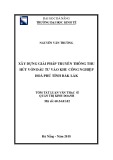


![PET/CT trong ung thư phổi: Báo cáo [Năm]](https://cdn.tailieu.vn/images/document/thumbnail/2024/20240705/sanhobien01/135x160/8121720150427.jpg)
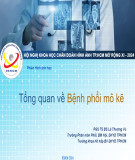
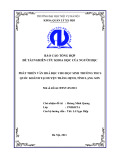

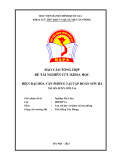
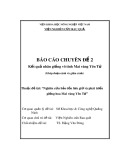






![Báo cáo seminar chuyên ngành Công nghệ hóa học và thực phẩm [Mới nhất]](https://cdn.tailieu.vn/images/document/thumbnail/2025/20250711/hienkelvinzoi@gmail.com/135x160/47051752458701.jpg)









